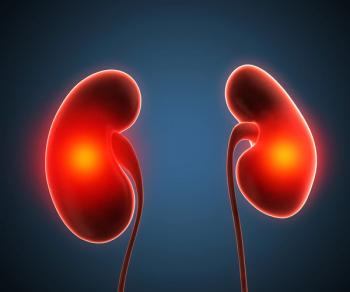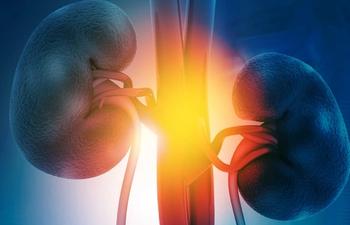
Surveillance of Small Renal Masses Yields Good Outcomes, Has Challenges
Active surveillance of small renal masses has been shown in recent years to be a generally safe and reasonable approach, though there are a number of factors for clinicians to keep in mind in taking this path.
For many patients with small renal masses, several options for management are available. Active surveillance (AS) of the mass has been shown in recent years to be a generally safe and reasonable approach, though there are a number of factors for clinicians to keep in mind in taking this path.
“In terms of oncologic outcomes, I would say AS remains underutilized,” said Phillip M. Pierorazio, MD, of the Sidney Kimmel Comprehensive Cancer Center at Johns Hopkins University in Baltimore. Pierorazio spoke about the use of AS in patients with small renal masses at the 15th International Kidney Cancer Symposium (IKCS), held November 4–5 in Miami, Florida. He noted that current guidelines use words such as “optional” and focus on “suitable” patients-word choices that he anticipates will change in upcoming guideline updates.
One systematic review of the literature, which included 73 peer-reviewed studies and two prospective cohorts, showed excellent results with AS. Among 1,795 patients, after a follow-up of 21 to 92 months the cancer-specific survival with AS was 100%. Metastasis-free survival was 98.9%, and overall survival in this cohort was 88.8%.
Other studies have also found good results with AS. The DISSRM registry opened in 2009 and prospectively enrolled patients who selected either AS or surgery for a solid small renal mass; it was designed as a non-inferiority study. At the most recent analysis, Pierorazio said a total of 543 patients in the study have been followed for a median of 3.01 years; at least 25% of those patients have more than 5 years of follow-up.
To this point, not one patient in the AS group has died from their disease. “This is at least a non-inferior management,” Pierorazio said. In the most recent (October 2015)
The overall survival curves, however, had begun to separate. At 2 years, the overall survival rate was 96% with AS and 98% with intervention; at 5 years, those rates were 75% and 92%, respectively (P = .06).
Pierorazio said that ultrasound is the “cornerstone” of an AS program. “Ultrasound is a reliable way to measure a small renal mass, if the radiologist knows what they are looking for,” he said. He recommends ultrasound imaging every 6 months for the first 2 years after diagnosis, and then annually thereafter. Additionally, each year patients should undergo chest imaging and a complete metabolic panel to complete a metastatic evaluation.
The use of ultrasound to measure growth of the mass, however, does carry some caveats. In one analysis, after 48 months the mean growth rate of small renal masses under AS was 0.09 cm/year. However, Pierorazio said that “the growth rate is highly variable within the first 6 months to a year…. We’ve learned over the last 7 years not to jump to conclusions, not to rush people off to the operating room.” The first measurement of a growth rate, he said, may not be conclusive; many tumors have a period of growth followed by a period of quiescence, followed by more growth. Models of tumor growth should likely not involve linear trends because of this.
Renal mass biopsy (RMB) is also a possibility for patients under AS. Alexander Kutikov, MD, of Fox Chase Cancer Center in Philadelphia, spoke during the symposium and said that the “pendulum has been swinging from the concept of ‘biopsy never’ to this concept of ‘biopsy always.’ The question really is, is a universal RMB justified in routine clinical practice?”
In AS patients, many patients may not benefit from RMB, and though it is a low-risk procedure there is always some risk associated with biopsy. “If you’re an AS patient, you should only do a RMB if it’s going to change your clinical management,” Kutikov said. At present, the data suggest that RMB should be used “more than never, but less than always.”
Newsletter
Stay up to date on recent advances in the multidisciplinary approach to cancer.


















































































